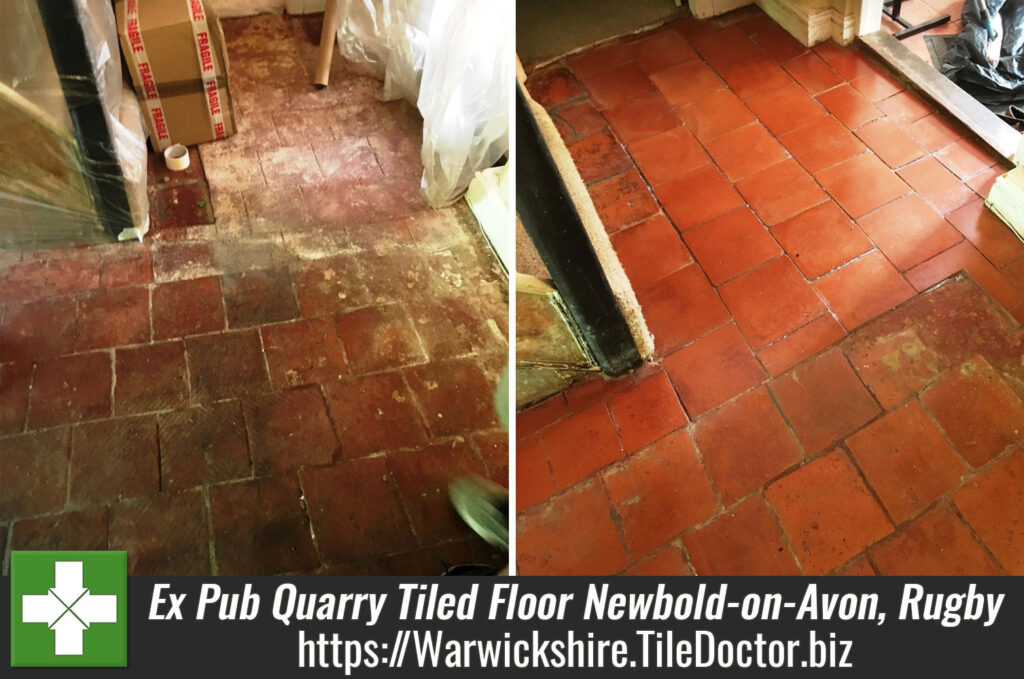Pubs have been though a decline in the last ten years with one in five closing due to increased business rates and some believe the ban on smoking has had a part to play. My client saw this particular pub come up for sale in Newbold-on-Avon near Rugby and snapped it up with the intention of turning the lovely thatched Cottage back into a home. It needed a lot of work though and I was called into to sort out the floor which was a mixture of 6×6 inch and 9×9 inch Quarry tiles. The tiles were in a bit of a state and there were also large sections of concrete in 3 areas that had been painted red to blend in with the tiles.
 |
 |
Rebuilding and Cleaning a Quarry Tiled Floor
The customer wanted the Quarry tiled floor restoring and extended throughout the floor which meant a substantial amount of work would be required to remove the concrete, rebuild the foundation and level with screed and then fit around 100 reclaimed tiles not to mention cleaning and sealing.
 |
 |
The work was hard going at times, especially knocking out the concrete and adding the screed surface to the right level. Once that was done worked moved quickly on to laying the new tiles and grouting them in. Overall it took three days just to rebuild the floor alone.
 |
 |
The customer did not what the Floor to look too different between the old and new so once the tiling was done the whole floor was treated with Tile Doctor Remove and Go to remove traces of red paint and glue. The solution was scrubbed in using a rotary machine fitted with a scrubbing pad and then rinsed off with water and then extracted using a wet vacuum.
This improved the look of the tiles but it also revealed some grout haze issues on the original tiles and after digging up the floor earlier I was aware no damp proof course had been installed which is not unusual in these older properties. To counter the grout haze and deal with any potential efflorescence issues I gave the whole floor an acid wash with Tile Doctor Grout Clean-up which was scrubbed in and then rinsed off with water and extracted with a the wet vacuum. The tiles need to be dry in order to be sealed so I left the floor for 24 hours with a number of industrial Air Movers in place to aid the drying process.
Sealing a Quarry Tiled Floor
Upon my return to the house I checked for any dampness that could have damaged the performance of the sealer, thankfully, the floor was dry and ready to seal, and so I proceeded to apply several coats of Tile Doctor Seal & Go Extra.
Seal & Go Extra is a fully breathable sealer that allows for effective moisture transmission, important where no damp proof course is installed. The sealer provides durable surface protection against dirt and stains, and is suitable for most kinds of internal, natural stone tiled floors, including Quarry, Victorian and Flagstone.
 |
 |
The job took a week in total and as you can see from the photographs I successfully managed to restore the old tiles which with the addition of the cleaning and sealing have blended in well with the new tiles.


Efflorescence (aka mineral salts) can be a problem with old floors that have no damp proof membrane or have seen water damage as white salts are deposited on the surface of the tile as the damp evaporates. Damp proof membranes are a relatively recent invention and only became mandatory in the 1960’s.